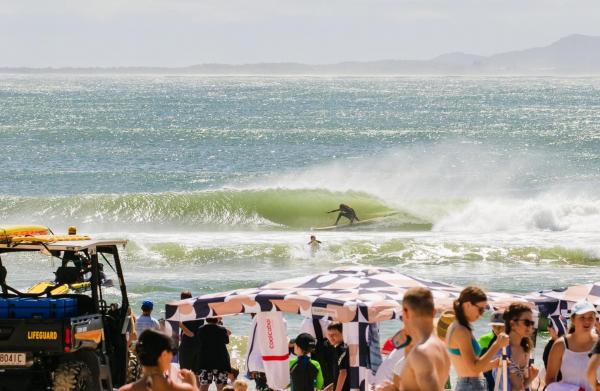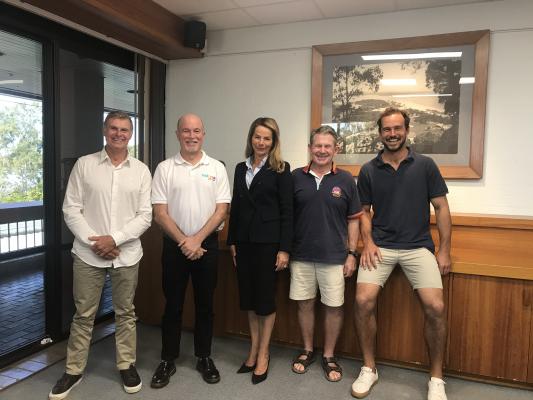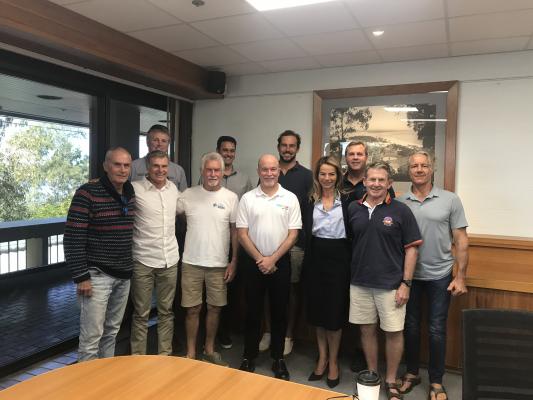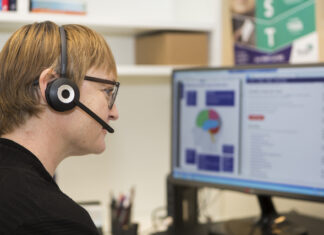The Noosa Council-led roundtable on safe surfing is getting closer to reaching consensus between all surfing stakeholders on a two-tiered code of conduct to be marketed through the entire community.
The ambitious program, established by council and the Noosa World Surfing Reserve four months ago, looked a bit like mission impossible when it set out to unite competing factions within the surfing community in an effort to promote safer surfing and better etiquette in the waves. But, somewhat surprisingly after a summer of increasing tensions over crowd control issues, in the course of four meetings so far, friction has given way to common ground and a shared belief that the surfing community can self-manage the problems of Noosa’s world class surf breaks being “loved to death”.
“The key message so far,” said roundtable chair and Noosa Council CEO Brett de Chastel at the conclusion of last week’s meeting, “is that all the surfing interest groups have come together on this, recognising that they need a united front to achieve the right outcomes and make Noosa a safer and more inclusive surfing environment.”
The wide-ranging group includes representatives from council as well as the Noosa World Surfing Reserve, Noosa Heads Surf Club, Noosa Malibu Club, Noosa Boardriders, the kite-surfing, foil-surfing and stand up paddle surfing communities, Maritime Safety Queensland and the local surf industry. Together they have formulated a two-tiered structure of surf codes designed to foster safe practices in the water and mutual respect between all of the surfing disciplines. “That has been the key,” Brett de Chastel said. “Everyone shares the same focus on the importance of respect.”
The over-arching code, built along the lines of Surf Code, the educational program created by Noosa World Surfing Reserve, will focus on creating a culture based on the spirit of surfing, recognising that we are all visitors on traditional land and water, using ambassadors to promote good etiquette and behaviour. Under this will be specific codes for each of the surfing disciplines, outlining the risks related to the activity and methods of addressing them.
Under the system, a family of ambassadors will be appointed representing all of the groups, and marketed as influencers to the broad surfing population. In the water, their message will be simple and subtle: “Welcome, this is the way we do things around here”. In advertising and promotion, the message from champions and identities in every discipline, from ocean swimming to kite-surfing and everything in between, will be, “I’ve signed the code”.
While different user groups, notably kite-surfing, have successfully used a code of conduct to create changes of behaviour for a decade or more, the Noosa initiative is thought to be the first time in Australia that all surfers in a community have come together to push for cultural change. The reason for that is simple: very few surfing communities have experienced the rising and relentless tide of over-crowding like we have. What used to happen at Christmas, Easter and major swell events, now happens year-round, bringing with it frayed tempers as surfers face tension in the water as they compete for every wave.
The end result is that surfing in some of the world’s finest waves becomes less safe and less fun.
The Safe Surfing Roundtable still has a long way to go, but under council’s guidance, the foundations have been built, and the group plans to launch its conduct campaign by spring.









